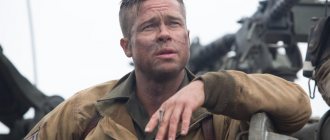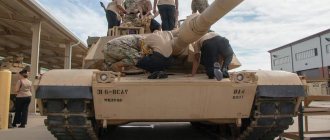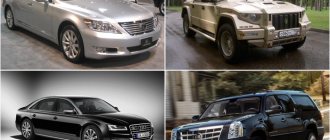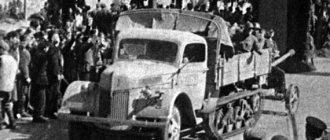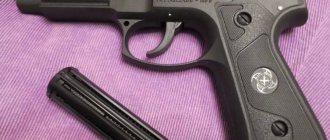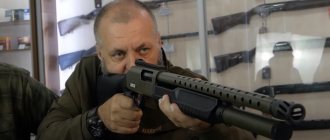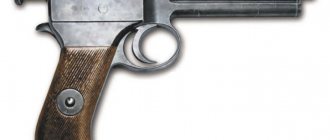Currently, more and more new combat vehicles are being invented every year. Some are used exclusively for defense, others for attacking actions and suppressing enemy fire. One thing is for sure: there are fighting vehicles in the world that surprise with their armor, speed and capabilities, including destructive ones. Let's talk about the most interesting and famous models, consider their key features, capabilities in a combat conflict, and much more. We will pay special attention to equipment for transporting personnel, as it is very interesting.
Some general information
As noted above, we will mostly talk about equipment for transporting infantry, for example, armored personnel carriers and infantry fighting vehicles. In fact, they are practically no different from each other. The key difference between an infantry fighting vehicle is that such equipment is capable of supporting allied infantry on the battlefield, while an armored personnel carrier is only capable of transporting it to its destination. But nowadays all these machines are used for the same purpose. The Marder tank, for example, is a fairly well-known Bundeswehr vehicle. The equipment weighs about 33 tons. It was put into service back in 1970 and to this day is one of the ten best infantry fighting vehicles. Serves for transporting infantry (7 people). The BMP crew consists of three people. This is certainly a worthy German vehicle, although it did not see combat.
GAZ-66 (1964-1999)
The third line belongs to GAZ-66 (years of production: 1964-1999). This car is widely known in our country. It has two axles and all-wheel drive. It is often used in the Russian army. It was produced for three and a half decades, and the total number of trucks produced almost reached a million. Only the military knows how many of these vehicles are in use in our country today. And the reserves of it in the army are quite serious, since from the nineties to the present day these vehicles (which are previously written off) have been sold with conservation.
The GAZ-66 truck in the army was equipped with various body add-ons (flatbed body, various KUNGs for command, communications, medical care, etc.). They use jet units and modules for disinfection and showering. There was a variant for landing (GAZ-66B), which had a roof and a folding steering wheel so that the car could fit in a transport aircraft. Today in the army the GAZ-66 is often replaced by the GAZ-3308 truck, which is called “Sadko”. In essence, this car is a modernized version of the GAZ-66.
Survival in off-road conditions and excellent cross-country ability are characteristic features of the GAZ-66. It is compact, lightweight, and has excellent weight distribution, as well as self-block axles. In addition, the truck has a mechanical winch and tire inflation. He is valued not only in the army, but also in “civilian” organizations. The carburetor engine (V8, 4.2 liters) tolerates radiation (electromagnetic) well, which occurs during an explosion (nuclear). This cannot be said about “electronic” motors. The ergonomics of the driver's seat let us down: when landing, you practically hug the power unit, the steering wheel is almost horizontal, the gearshift lever is located in the rear of the cabin. It must be remembered that the military must steadfastly cope with the difficulties of service.
The best fighting vehicles in the world: M1114
This armored vehicle comes from America. Seeing it in the photo, you can immediately guess that this is the same legendary Humvee. Around 1990, a decision was made to replace the M998 chassis, which was not effective enough in a military conflict. At the same time, the developers were given the task of improving speed, anti-fragmentation and mine-resistant armor and keeping the weight to 5 tons. All this has been achieved. Among other things, impressive firepower was added. In particular, detachable armament consists of anti-tank missile systems, remote-controlled 12.7 mm machine guns, as well as roof-mounted light machine guns.
Today, the Humvee is a symbol of the US Army, as this armored mobile wheeled vehicle has been used in all conflicts for 30 years. According to some reports, about 200,000 different modifications of the Humvee have been manufactured. Of course, this armored vehicle was very often shelled, broke down, caught fire, stalled and exploded, but the survival rate of the crew was quite high.
GAZ-AA/MM (1932-1949)
The second position is occupied by GAZ-AA (MM), which was produced in 1932-1949. If the T-34 tank is considered the tank of our Victory, then the famous “lorry” is considered the truck of this significant event, which carried the entire war to the “hump”. About a million units of these vehicles were produced, which made it possible to make it a common truck not only in the Red Army, but throughout the USSR in the first half of the 20th century. By the time the war began, the army had over 150 thousand cars, and they were used until the 60s.
Due to military necessity and the short lifespan of these trucks, GAZ-MM-V (military-style) began to be supplied to the front. In order to economically consume the metal used, instead of wings having a semicircular shape, they began to use straight ones, which are bent from a material such as roofing iron. The car didn't have
brakes (on the front wheels), additional headlights, wipers, muffler and a number of other components. Wood was used to make the cabin, but in 1942 canvas curtains began to be used instead of doors.
On the howl, such vehicles transported infantry, wounded, various cargo, guns, radio stations, various tanks, etc. And this is in off-road conditions and with overloads. The first option is GAZ-AA, produced in 1932-1938. The car was an analogue of the Ford AA (USA). It had a gasoline engine (42 hp and 3.3 liters). It was very durable compared to the equipment supplied under Lend-Lease operations. From 1938 to 1949 They produced the GAZ-MM (modernized) version, the engine of which was slightly more powerful (50 hp). In addition, this car had a reinforced suspension and steering, which was redesigned.
Universal Carrier and Sonderkraftfahrzeug 251
The first tank comes from Britain. It is, in fact, an armored personnel carrier-tractor. The appearance of the Universal Carrier is rather unprepossessing, however, with a crew of 5 people, the vehicle moved at a speed of 50 km/h and had fairly good maneuverability. During World War II it was used on almost all fronts. The weight of the vehicle is 4 tons with 10 mm armor. From 1934 to 1960, about 110,000 of these machines were manufactured, after which they were discontinued.
Quite famous is the half-track armored personnel carrier called SdKfz 251. It is a very fast, spacious and fairly protected vehicle. Most likely, this is why the Germans fell in love with her. The crew consisted of only two people, but the back could accommodate 10 landing troops. The personnel were protected by an armor plate 15 mm thick. During the Second World War, the SdKfz 251 went through quite a few modifications. Various surveillance and communication devices were installed, as well as weapons such as a multiple launch rocket system.
ZIL-131 (1966-2002)
The fourth position was taken by the ZIL-131, produced until 2002. (since 1966). Although the famous plant named after. Likhachev no longer exists; the ZIL-157 car and a lightweight analogue of the Ural can be found in various military units. But the famous 131st cannot be called young, since a significant part of these cars were produced during the USSR and for some time after its collapse. Over time, equipment wears out and is written off from army warehouses. The reserves of such equipment are still significant.
ZIL-131 is used in the army as a “universal tool”. It can transport not only semi-trailers, platforms (flatbed), but also cargo, personnel and complexes (both missile and anti-aircraft). It is also used for transporting KUNGs used in repair shops, medical stations, camp kitchens and radio-electronic systems.
In the USSR, fuel was cheap, so the base engine for this car was a V8 engine (150 hp), which is carburetor. But the engine is its weak point: the thrust is insignificant, but the fuel consumption is high. Therefore, “Zilok” is losing its conquered positions to diesel engines. But this car has significant potential in terms of cross-country ability. There is all-wheel drive, and an electro-pneumatic connection is made to the front axle. In addition, there is a 330 mm ground clearance and a system that changes the tire pressure level. A mechanically driven winch is provided. They even produced a road train (5-axle) with all-wheel drive, which is rare in our time, and has a ZIL-137 tractor. There is a semi-trailer (10 tons), the axles (drives) of which are installed from a ZIL-137B.
World infantry fighting vehicles: Achzarit and BMP-1
Achzarit is Israeli heavy equipment that is used exclusively for defensive purposes. Currently, it is the most protected armored vehicle of its kind. “In the forehead” there is an armor plate 200 mm thick, which has been improved with dynamic protection and carbon fibers. All this added 17 tons of weight to the armored personnel carrier, but significantly increased the personnel’s chances of survival. Achzarit is ideal for combat in urban environments. This is due to thick armor plates. The vehicle is not afraid of shots from grenade launchers even at point-blank range, to say nothing of fragmentation damage.
"Leopard" 2A7 and "Abrams"
These are the only tanks to pass 10 out of 12 tests in simulated tank battles. "Leopard" is a full-fledged warrior who can attack and defend in urban and open areas. It is equipped with a 122 mm cannon and has 1300 mm turret armor in the forehead, which makes it completely invulnerable. The weight of the Leopard is 67 tons, but even so it shows good dynamics and accelerates to 75 km/h. This model can even be found in the magazine of the DeAgostini publishing house. The fighting vehicles of the world, collected in the publications of this popular magazine, undoubtedly deserve attention. "
Abrams" and "Leopard" repeat each other. The only key difference is that the Abrams has 1,000 mm of frontal armor, which is also quite a lot.
Lightweight machines for tough work
Lightweight machines for tough work
June 14 '19
Desert patrol cars, fast attack vehicles, high-speed assault vehicles, combat buggies - all these words are about the same thing. Conventionally, we can consider that the harbinger of such vehicles were light military SUVs (Volkswagen Kübelwagen, Bantam BRC and others), but the goals of these types of transport are radically different.
If light military SUVs are primarily needed by the army, then combat buggies are more likely to be transport for special forces. It was in Desert Patrol Vehicles (DPVs) that Navy SEAL Team 6, better known as the SEALs, was the first to enter Kuwait City during Operation Desert Storm.
Combat buggies do not have armor, and their maneuverability is primarily due to their low weight. On rough terrain, as well as in gaining speed, few army vehicles can compete with them. This selection presents some of the ultra-light vehicles that are designed for “special soldiers” around the world.
Fast Attack Vehicle (FAV) can be considered the first combat buggies. The Chenowth rally team in the 80s won an American army contract to develop a fast military buggy, and off we go... militarymachine.com
The first Fast Attack Vehicle (FAV) appeared in 1982, but remained idle for a long time. The finest hour of fast attack vehicles came during Operation Desert Storm. militarymachine.com
American Navy SEALs in the FAV were able to quickly overcome the desert and break through to the city of Kuwait. Thus, they made the best advertisement for Chenowth and this class of equipment. militarymachine.com
American FAVs were equipped with 2-liter 200-horsepower Volkswagen engines, weighed 680 kg and could travel 320 km on one gas station, the maximum speed was 97 km/h. In 1991, the Fast Attack Vehicle was renamed Desert Patrol Vehicle (DPV). militarymachine.com
With the growing needs of the American army, Light Strike Vehicle (LSV) vehicles appeared, weighing 960 kg, picking up speeds of up to 130 km/h and carrying significantly more cargo (including weapons). militarymachine.com
The LSV later replaced the ALSV (Advanced Light Strike Vehicle). It was an even heavier monster weighing 1600 kg with a 160-horsepower engine capable of “dragging” the car in full gear onto 75-degree slopes. militarymachine.com
"Kojak" is a combat buggy of the Bolivian army, adopted for service in 2005. The three-seater vehicle can be equipped with both small arms and missile launchers. razonyfuerza.mforos.com
"Aperea" - a combat buggy of the Uruguayan army. There are several modifications, the most powerful of which can accelerate to 160 km/h and weigh 630 kg. vasili.io.ua
"Lobo", aka VATT (Vehiculo de Ataque Todo Terreno - "all-terrain assault vehicle"), was adopted by the Peruvian army in 2005. VATT is 4.5 m long, 2.2 m wide, 2.6 m high, and weighs 850 kg. discasanave.com
VELA (Vehiculo de Exploracion Ligero de Asalto - “light reconnaissance and assault vehicle”) was developed for the Argentine Armed Forces, but did not officially enter service. The vehicle is equipped with a 1.6-liter Volkswagen engine and two machine guns (12.7 mm M2NV and 7.62 mm M60). vasili.io.ua
The VLF (Vehiculo Liviano de Fiero - “light fire vehicle”) was developed for the Cuban special forces “Avispas Negras” (“Black Wasps”). vasili.io.ua
The Chinese Fast attack vehicle was developed by NORINCO Corporation in 2001. In terms of its characteristics, it is closer to light SUVs and, unlike all previous cars, it seats 4, not 3, people. military-today.com
"Chaborz M-3" - a combat buggy from "Chechenavto" (RF). The lightweight multi-purpose all-terrain vehicle is capable of transporting a crew of three people and a load of up to 250 kg in steppe, desert and mountain conditions. defense.ru
“Chaborz M-6” is another special forces combat vehicle from “Chechenavto”. It can carry up to six fully equipped fighters and accelerate to 130 km/h. Its length exceeds 4 m, weight is 1.5 tons. tass.ru
Flyer-60 Advanced Light Strike Vehicle is a lightweight American buggy-type SUV by military standards. The vehicle seats five people, is equipped with a 150-horsepower 1.9-liter diesel engine and can carry up to 1.6 tons of cargo. armyrecognition.com
The Reckless UTV electric buggy from the American Nikola Corportation is equipped with four electric motors (one for each wheel), which provide power equivalent to 555 hp. The vehicle can be armed with machine guns, automatic grenade launchers and Javelin ATGMs. armyrecognition.com
The OV-2 hybrid buggy was developed by the Kalashnikov concern. The car reaches speeds of up to 100 km/h and carries up to 4 people, including the driver. The length of the OV-2 buggy is 2.9 m, width - 1.8 m, height - 1.5 m. kalashnikov.media
Ukrainian "Buggy". According to the developers, their brainchild is a hybrid of a Humvee and a DPV. kyivpost.com
One of the most popular modern combat buggies is the MRZR family from the American Polaris Defense. These machines have a modular design, which allows them to be adapted to any need. In addition, these vehicles are available on the civilian market. The photo shows a modification of the MRZR D4. military.polaris.com
Polaris MRZR buggy with combat laser from Raytheon. raytheon.com
T-90 is one of the best
The Russian-made T-90 tank also deserves attention. It is equipped with a 120-mm smoothbore cannon, which can fire armor-piercing, sub-caliber, cumulative, high-explosive and anti-tank missiles. A 12.7mm machine gun is mounted on the roof, capable of firing up to 900 rounds per minute, which can fire at aerial targets. There is also a 7.62 mm machine gun with a firing range of up to 2 km. Overall, this is an excellent tank, for which a separate collection is reserved. The fighting vehicles of the world presented in this article are real. But some of them have long been in museums, while others are actively involved in conflicts around the world.
Briefly about the M2 Bradley
This American infantry fighting vehicle has earned many awards and widespread recognition for its protection. Indeed, quite a lot of attention is paid to the survival of the crew (dynamic protection, multi-layer armor 50 mm thick and much more). There are also excellent weapons that allow personnel to conduct targeted fire at the enemy. We can say that these are the most popular models today. Military vehicles of this type are still being manufactured today. About 7,000 copies have already been produced.

